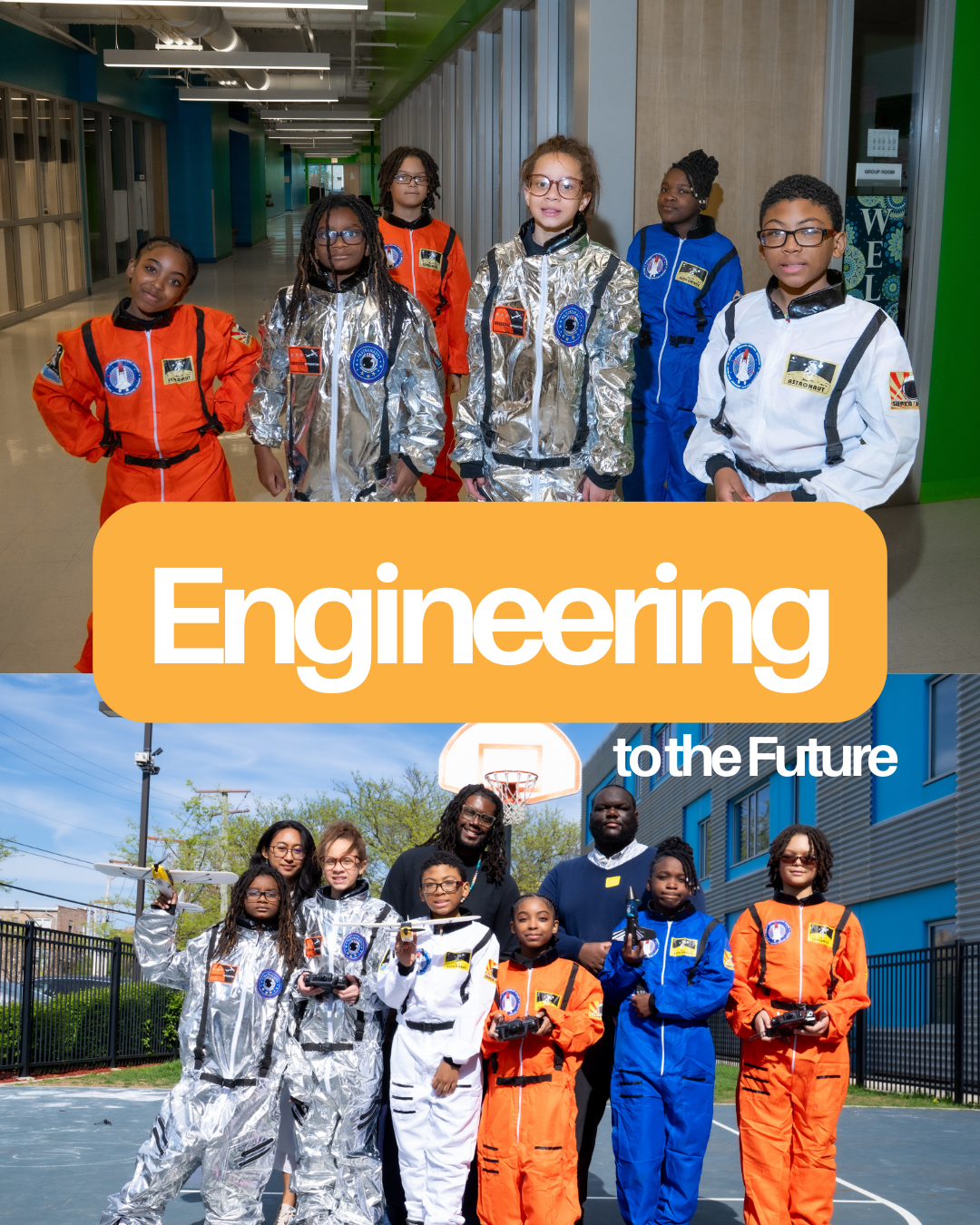
Let's Close The STEM Gap Together
⋆
Let's Close The STEM Gap Together ⋆
Healthcare To The Future
-
Students explore healthcare through hands-on lessons that bring medicine, anatomy, and wellness to life. From heart and dental simulations to pharmacy, nursing, and biomedical engineering, they experience the many pathways within healthcare.
-
Designed for students in Grades 4–12, adaptable for both in-school and after-school settings.
-
Simulate nursing and pharmacy stations
Explore human anatomy through “Med School” lessons
Examine nutrition, mental health, and biomedical engineering
Celebrate achievements with a White Coat Ceremony
Tech To The Future
-
Students dive into the world of technology through hands-on lessons that spark innovation and creativity. From building LEGO engineering projects and coding games to exploring robotics, digital forensics, and web design, students learn how technology powers the world around them.
-
Designed for middle and high school students (Grades 6–12). Adaptable for school-day and after-school programs.
-
Build and code robots using Micro:bits and LEGO kits
Explore digital creativity through gaming and music coding
Learn cybersecurity, forensics, and engineering fundamentals
Create real tech innovations — from Bluetooth speakers to websites
Engineering To The Future
-
Students explore engineering through hands-on lessons that bring design, innovation, and problem-solving to life. From circuits and chemical reactions to aerospace and biomedical builds, they discover how engineering connects creativity with real-world impact.
-
Designed for students in Grades 4–12, adaptable for both in-school and after-school settings.
-
Build circuits and test materials using Makey Makey kits.
Design chemical, civil, and environmental engineering projects.
Explore biomedical and aerospace engineering concepts.
Develop creativity, collaboration, and design-thinking skills.
Core Values
Identity
The Labs go beyond just teaching STEM, but emphasize creating a culturally relevant learning environment where students' identities and cultures as seen as assets to STEM. This fosters a sense of belonging and empowers youth to connect their backgrounds to STEM exploration.
Liberation
We aim not to just cultivate the next generation of STEM workers but STEM innovators who are proud of who they are and the communities they belong to. We aim to empower youth to use STEM to dismantle systemic barriers, allowing them the freedom to pursue their dreams and create positive change.
Imagination
We want to empower youth to "use their critical imaginations to freedom dream and create their visions for the future." We aim to foster an environment where youth come to understand that if they can dream it, it exists.
Ujima
(Collective Work and Responsibility)
To build and maintain our community, we believe in the importance of working together as a community to achieve shared goals. We believe in co-design with the communities we belong to to solve our challenges.
Mentorship
Seeing successful Black and Brown professionals in STEM fields inspire future generations. STEAM & Dream Liberation Labs provides role models for Black youth and demonstrates the possibilities within these fields.
Theory of Change
Liberatory Design
Designing solutions for
communities with those most
impacted by the problem
Place-Based Learning
Ground STEM learning in
students' cultural assets and
the context of their communities
Radical Futuring
Fostering an environmental to
consider all the possibilities
(freedom dream)
Our Why
The STEM industry is booming but lacks diversity. According to a study by the National Association of Manufacturers and Deloitte, the U.S. will need to fill 2.4 million STEM jobs by 2028. Despite a surge in STEM jobs, Black and Latinx individuals remain significantly underrepresented. While these groups make up about 30% of the U.S. population, they account for only 9% and 7% of the STEM workforce, respectively. This talent gap hinders innovation and perpetuates systemic inequities.
Nationally, schools serving Black and Hispanic students also face significant barriers to accessing comprehensive STEM curricula, contributing to what is known as the STEM exposure gap (Youscience study, 2024). Chicago mirrors this national issue, with many students, particularly from underserved communities, lacking access to advanced math and STEM education. We believe diverse perspectives are crucial for solving complex global challenges and creating a more equitable future.
Expected Outcome from STEAM & Dream
All students have designed solutions for the future
All students have an increased STEM identity
Students have a desire to continue pursuing STEM pathways
Students believe themselves to be leaders
Students have identified challenges tied to their community or world that they want to solve
“Dream a little before you think” - Toni Morrison







